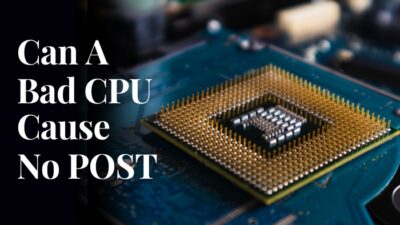Technically, a CPU is the most durable part of a computer and can last at least 7 to 10 years or longer.
However, it can receive damages for several reasons. Where a wholly damaged CPU may fail to show signs of life, a partially damaged CPU can still perform without significant performance drops.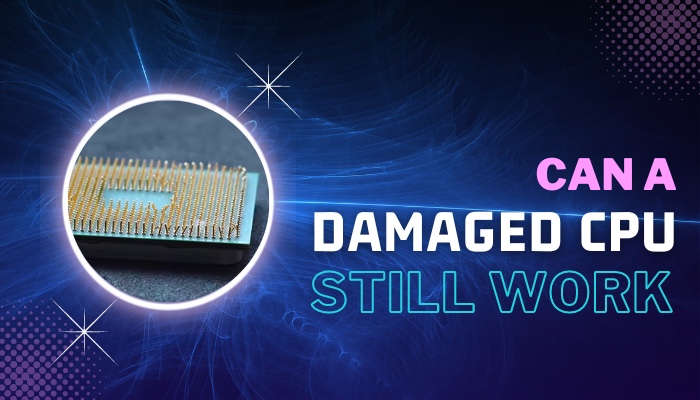
In this article, I will answer all your queries regarding how a damaged CPU can still work and how to fix a damaged CPU.
Tag Along!
Can your Damaged CPU Still Work?
A fully damaged CPU cannot go through the boot-up process. However, if the CPU is partially damaged, it may boot up and run smoothly without a significant performance drop. When the processor fails to boot up the device, you may need to replace the CPU.
A CPU can receive several types of damage in various circumstances. And works even after the damages in case the damage is minor.
Consider the following discussion about various types of damages and their impact on the overall computer performance.
Here is the list of damages and their impact on performance:
1. Reduced Clock Speed
A slightly damaged CPU sometimes fails to boost the CPU clock speed to the max boost frequency. For instance, the Ryzen 7 2700X has a Max Boost frequency of 4.3 GHz.
If the CPU is partially damaged, it won’t be able to utilize its Max Boost frequency of 4.3 GHz. Instead, it will only utilize the base clock speed of 3.7 GHz or even lower than that.
The clock speed is the number of cycles your CPU executes per second.
A reduced clock speed will impact the processor’s performance and may lead to numerous problems. You can quickly check if your CPU is overclockable and use the most boost frequency for high performance.
2. Damaged Pins or Pads
Modern processors are highly advanced system-on-chip (SoCs), containing just more than CPU cores. Some of them include integrated GPU, PCIe, and memory controllers on the chip.
However, the CPU pins are mainly used for power or data transmission. Besides, some pins are used for ground (VSS). When you damage a CPU pin, your computer may still work if the pin is not used for transmitting data. 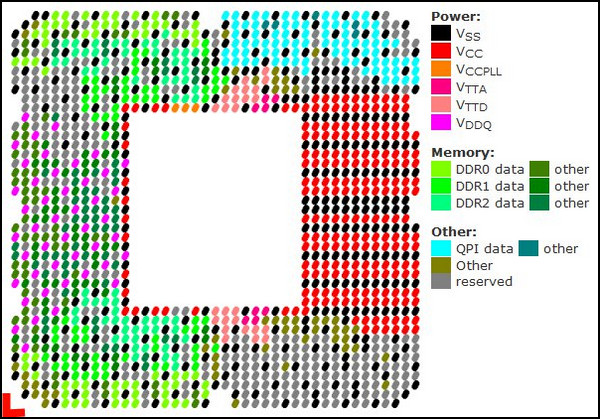
On the other hand, if you break any pin that transmits data, your CPU may fail to transfer the required data to the motherboard, leading to several errors.
3. Power Damages
Another culprit for damaging a CPU is power damage. For example, Ryzen 7 2700x owners can run their CPU as high as 1.45 V. However, the safe voltage for the CPU is 1.330 V.
If your CPU uses beyond 1.4 V, the processor may receive some damage. Therefore, you should monitor the power usage of your CPU and lower it if required.
While finding the optimal voltage for a CPU, start with a higher voltage and reduce it accordingly. During that time, closely check the CPU usage and also check the CPU throttling to find the optimal voltage.
4. Damaged IMC (Integrated Memory Controller)
An integrated memory controller is an integrated chip in the processor. The IMC can receive damages for several reasons, like too much voltage, age, or bad contact with the pins or pads.
When the IMC controller of your CPU is damaged, it may hamper the overall performance of your computer. Therefore, your computer will only work with a significant performance drop.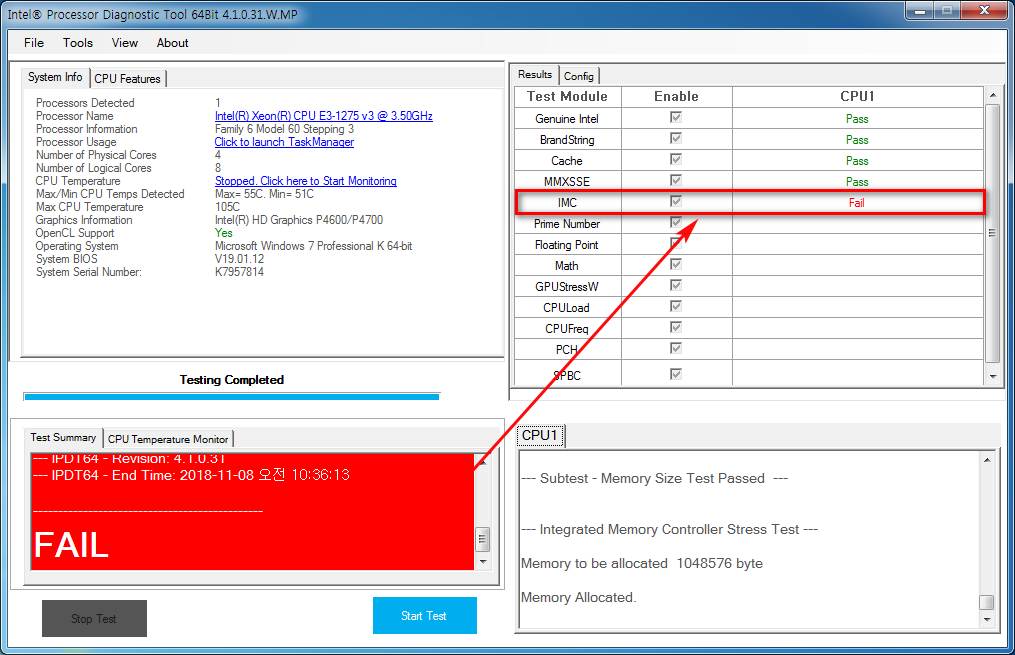
By looking at some primary symptoms of a damaged CPU, you can ensure that the CPU is dead or not. For more precise instructions on the symptoms of a bad CPU, move on to the next section of this article.
What are the Symptoms of a Damaged CPU?
A damaged CPU will show various failure symptoms, including booting issues, frequent shutdowns, beep alerts, freezes & lags, physical damages, or a blue screen of death. Besides, your computer can run fans at higher RPM if the CPU is damaged.
Sometimes, the computer can show assorted error codes like 0x00000 because of a damaged processor. Go through the subsequent discussion to understand the damaged CPU indicator.
Here is the list of the failure symptoms of a damaged CPU:
Booting Issues
To boot the computer, a CPU must pass the POST (Power-On Self-Test) process. However, a damaged CPU cannot pass this test, leading to boot issues.
Moreover, the system will show a blank screen. You might hear the fan sounds or even see the motherboard LEDs light up. No matter how much you press the keys or power button, your system will not boot.
Repeated Shutdowns
Processors generate a ton of heat while executing even simpler instructions. To manage this excessive heat, processors need a CPU cooler with optimized airflow.
If your CPU cooler is bad and fails to distribute the heat in the air, the CPU can fail because of this overheating. Ensure to check frequently if the CPU is overheating.
Overheating can damage the CPU and lead to numerous problems, including frequent shutdowns.
Beep Alerts
As I discussed earlier, your system goes through a POST process during the startup. It ensures all computer components are functioning correctly.
However, when the system fails to go through the POST process, you may hear a series of beep sounds.
Depending on the manufacturer, every motherboard has different beep codes. Hearing the number of beeps, you can quickly identify the reason behind the problem. Usually, you will hear 5–7 beeps if the problem is related to the CPU.
Physical Damages
Identifying the physical damage to a CPU is much easier. You just need to detach the CPU from the motherboard and examine for any sign of physical damage.
You can use a magnifying glass to check your CPU more efficiently. While examining the processor, look for bent pins, discolored areas, darker spots, blue tint, and the CPU Integrated Heat Spreader.
If the socket type is PGA, you will find the pins on the CPU. Similarly, you will find the pins on the motherboard if the CPU socket is LGA. Check out a separate post on LGA Vs. PGA.
Computer Freezes
Another common symptom of a damaged CPU is often freezing and lagging. A faulty CPU can also cause stuttering.
You may lag during the system boot-up if the CPU fails to perform correctly. In some cases, the computer becomes completely unresponsive. You may need to restart the computer to use it again.
Blue Screen of Death
BSOD or Blue Screen of Death occurs when any computer components receive severe damage. Though, it is hard to determine which components are faulty and leading to this annoying issue.
However, you will get an error code with the BSOD to help identify the main culprit. For example, error codes 0x00000 refers to CPU-related issues.
Other components like RAM or Motherboard can also lead to the Blue Screen of Death problem. Fortunately, you can quickly fix the blue screen issue.
Can a Damaged CPU Be Fixed?
A CPU with minor damages like bent or broken pins and damaged CPU pads can be easily fixed. Besides, if the CPU is partially damaged from overheating, reapplying the thermal paste can fix the CPU. However, sometimes it is easier to replace the CPU if it receives a lot of damage.
Closely inspect the CPU after detaching it from the motherboard. You can use several household items to fix bent bins on the CPU or motherboard.
Go through the subsequent discussion to repair your slightly damaged CPU quickly.
Consider the following list to fix your damaged CPU:
Fix Bent or Broken Pins
If you find one or multiple pins damaged, you can quickly fix them with a hard plastic card or an ATM card. Place the CPU on a hard surface, and if possible, attach it to something.
Insert the card between two rows and start to straighten the bent pins. Look from the edge of the pins to ensure the pins are aligned perfectly. Repeat the process until every pin is fixed.
Contrarily, broken pins seem impossible to fix. However, you can reattach the broken pins to the CPU or CPU socket with specialized equipment (a soldering iron, solder, flux, and magnifying glass). 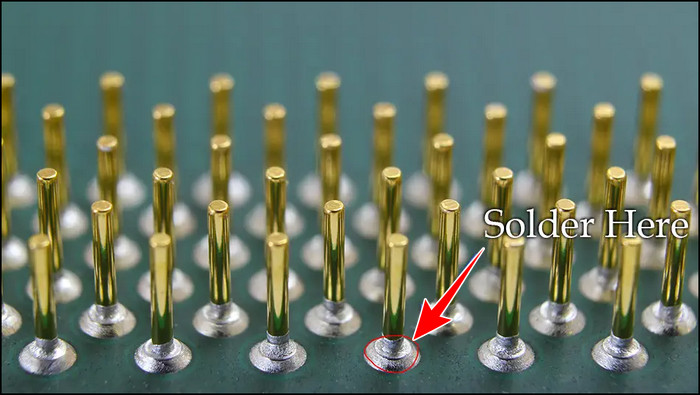
Re-apply Thermal Paste
Old thermal paste cannot handle the heat as it should, leading to overheating. If the thermal paste fails to perform its functions, it can damage the entire CPU.
To reapply the thermal paste, you must remove the cooler and clean the thermal paste on the CPU pins and motherboard. After wiping off the old paste, apply fresh thermal paste. You can also clean the CPU using rubbing alcohol.
Now, mount your CPU cooler and assemble the entire system. Your system should now handle the heat more efficiently, and hopefully, it will fix the CPU.
Fix CPU Pad
If you use a CPU from Intel, the chip has a pad instead of pins. Sometimes, the shoulder dots on the CPU pad come off for several reasons. In that case, you can fix the CPU pad by following the methods below.
Here’s how to fix the missing CPU pads:
- Apply a small amount of solder mask on the damaged dots.
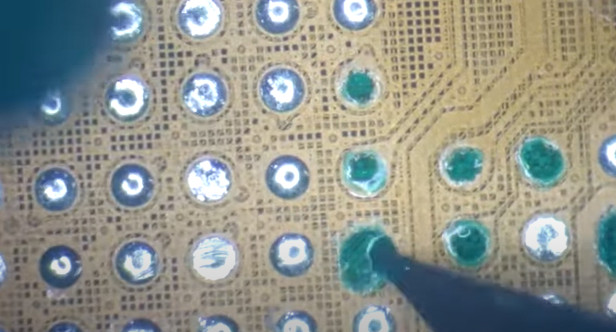
- Use a UV lamp (for 2–3 minutes) to solidify the solder mask.
- Use the 11 scalpel to flatten the solidified solder mask.
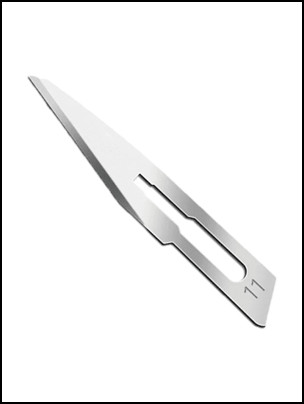
- Scrape out the copper skin around the solder mask.
- Reapply a small amount of solder mask, and use a UV lamp to solidify.
- Align the mesh and apply solder paste.
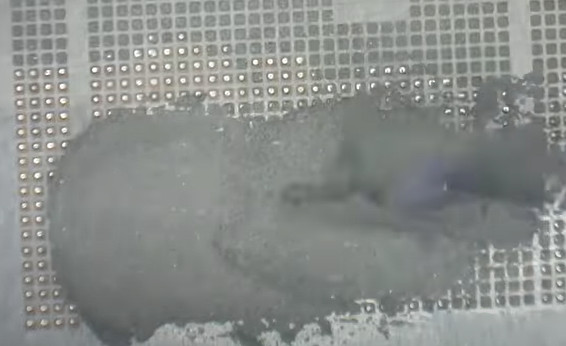
- Heat with an air gun. Keep the temperature between 230°–250° Celsius.
- Apply solder flux and heat again with an air gun.
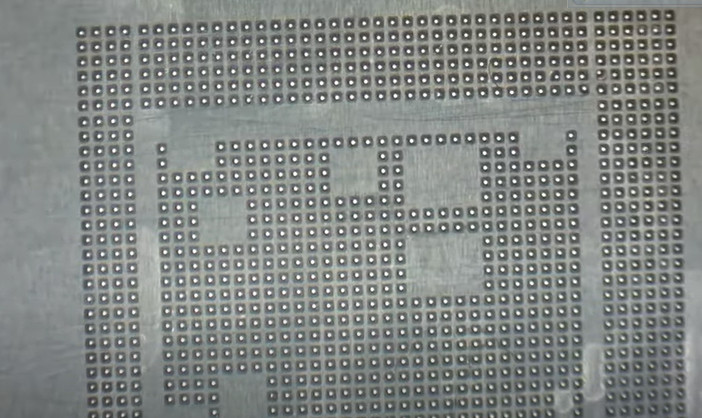
- Remove the mesh.
Once you successfully use the above tricks, the CPU pads will be fixed and ready to be used for another several years.
Frequently Asked Questions
How do I know if my CPU is damaged?
A damaged CPU won’t pass the boot-up process and often fails to pass the POST process. Moreover, you may encounter BSOD (Blue Screen of Death) because of a damaged CPU.
Will a computer boot with a dead CPU?
No, a dead CPU will not boot to the OS (Operating System). However, some CPUs may boot to the BIOS, depending on the motherboard model.
What causes CPU damage?
A lousy capacitor, overvoltages, overheating, and usage for an extended period can seriously damage a CPU.
Wrap Up
Depending on the damage, your damaged CPU may work in different circumstances. If the CPU is badly damaged from deep, it is unrecoverable.
However, if the CPU has minor damage, like bent pins, or broken CPU pads, you can fix it with specialized equipment.
Does your damaged CPU still work? Let me know by leaving a comment below.

